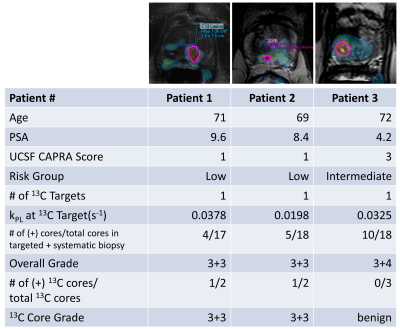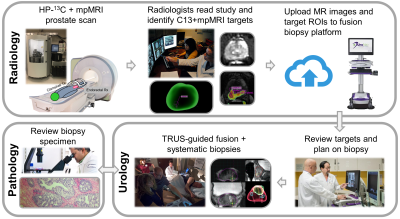Hsin-Yu Chen1, Robert A. Bok1, Hao G. Nguyen2, Katsuto Shinohara2, Antonio C. Westphalen1, Zhen J. Wang1, Michael A. Ohliger1, Lucas Carvajal1, Jeremy W. Gordon1, Peder E.Z. Larson1, Rahul Aggarwal2, John Kurhanewicz1, and Daniel B. Vigneron1
1Radiology and Biomedical Imaging, University of California, San Francisco, San Francisco, CA, United States, 2Helen Diller Family Comprehensive Cancer Center, University of California, San Francisco, San Francisco, CA, United States
1Radiology and Biomedical Imaging, University of California, San Francisco, San Francisco, CA, United States, 2Helen Diller Family Comprehensive Cancer Center, University of California, San Francisco, San Francisco, CA, United States
This technical development study demonstrated the feasibility of diagnostic intervention using HP-13C pyruvate MRI. HP-MRI was integrated into the diagnostic prostate mpMRI workflow, complete with identification of C13 research targets and sampling of these targets in fusion biopsies.

Figure
4. A
summary of biopsy results from each patient following the hyperpolarized 13C study and radiologist targeting
session. Low-grade cancer involvement was found in the cores corresponding to
the C13 targets in 2 out of 3 patients. All the C13-mpMRI studies and the biopsies were safe and successful without adverse
events.

